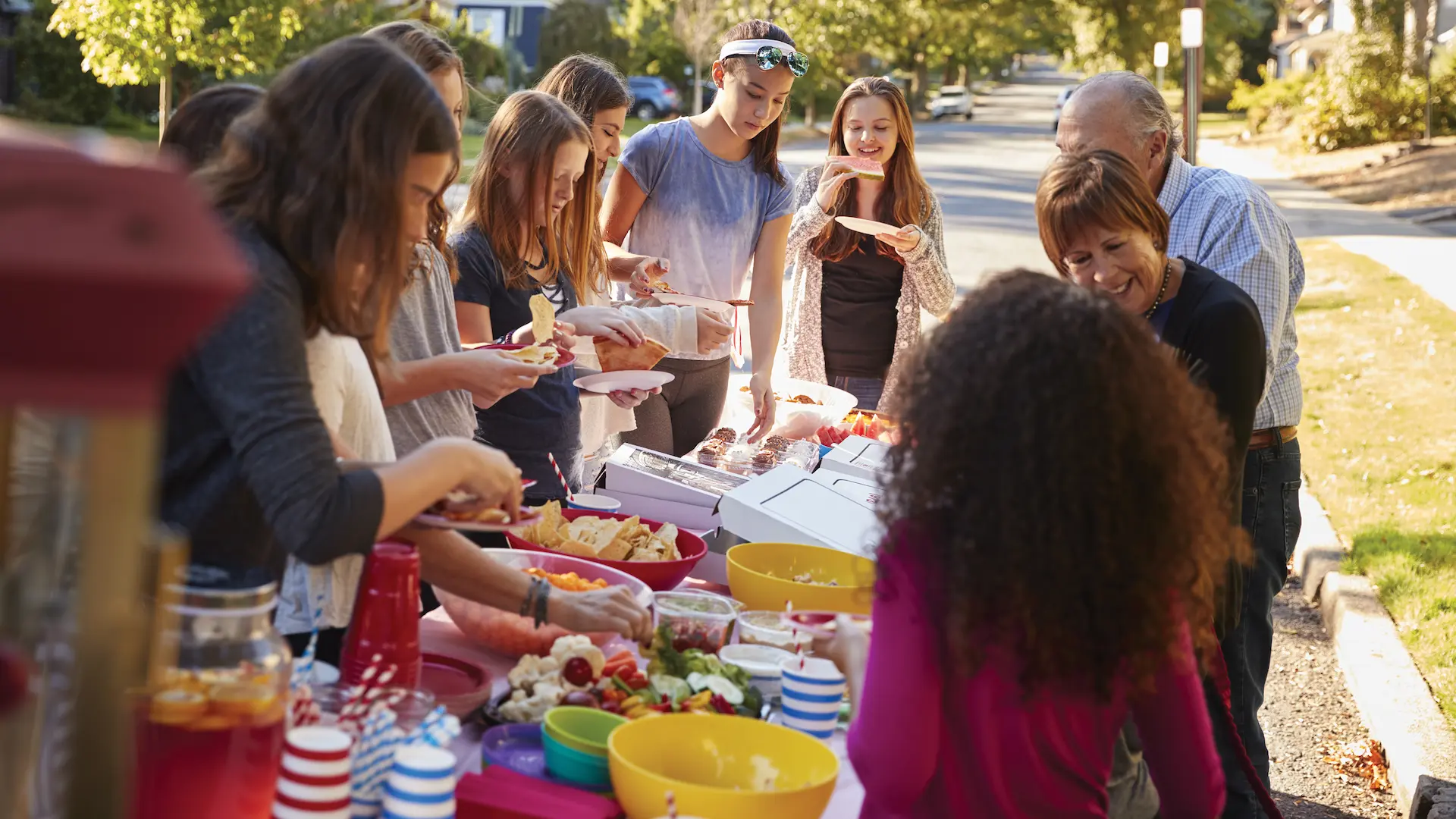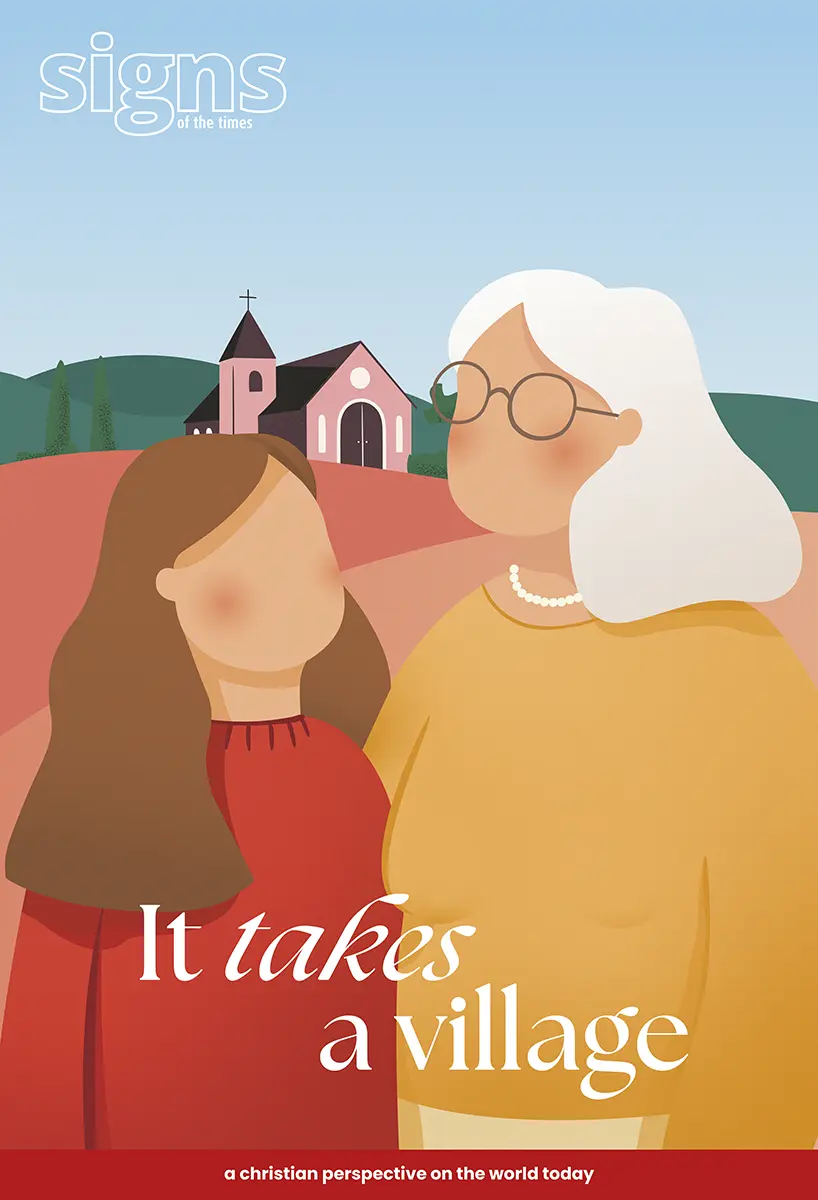The Sabbath community
October 1, 2018

Jerusalem can get a little crazy on a Friday night.
My friend Annalisa tells of her journey through the Holy Land during college. Her journey’s final day happened to be a Friday in Jerusalem. Already busy with the hum of hustle and bustle, Jerusalem picks up to an even more frantic pace as Friday’s sun begins to descend behind the breathtaking skyline. Hurry overtakes Jerusalem, she recounts. Cars zoom by faster than ever. Buses start moving before new passengers have a chance to sit down. Pedestrian paces pick up dramatically. All of a sudden, Jerusalem is in a flurry. Conservative Jewish men can be seen running so fast that their tightly wound Orthodox curls dropping from their temples flow far behind their heads as they race to home sweet home just in time for the sun to disappear into the night.
Why? What provokes the Jerusalem rush? Of course, this very scene has been playing itself out for centuries every Friday night in the ancient city of Jerusalem. A Jerusalem before sundown is a city buzzing in anticipation for the weekly celebration—the Jewish Sabbath that begins as soon as Friday’s sun descends. The sun’s setting inaugurates a day of rest and joy and hope when an entire city once again finds itself wrapped in the arms of a God at rest. Week in, week out, for centuries, the city has made its way home once again to the sacred day of rest to re-join God, synagogue, and family in celebration. Jerusalem is making its way home to light some candles, take its sigh of relief, and party with wine and laughter and the sweet taste of challah like it’s the dawn of creation all over again.
The ancient Jewish rabbis have always seen the Sabbath as a kind of homecoming.[i] Sabbath is that perfectly timed day each week wherein God’s people—prone to wander from the Lord their God—are once again welcomed back into the loving, eternal embrace of their Creator. Sabbath is not just a day of rest or family or good food. Sabbath, rather, is a structured reminder each week for all of God’s people together to return to their God, to their Maker, who intricately crafted them with love. The Sabbath day is the day when we all together run back home to the presence of God in our sacred lives.
Jerusalem on Friday is a whole city coming home. A whole city entering rest. Soon the city will be shut down for a day. Can you imagine it?
Sabbath is first about relationship to God. But the Sabbath is also about our relationship to each other. Leviticus 23 makes this crucial connection: “There are six days when you may work, but the seventh day is a day of sabbath rest, a day of sacred assembly. You are not to do any work; wherever you live, it is a sabbath to the Lord” (Leviticus 23:3). The Sabbath, alongside other celebrations such as Passover, the Festival of Unleavened Bread, and the Festival of Weeks, was not celebrated individually or in isolation but was a sacred day for the community to gather. Such a rhythm offered a texture in the yearly and weekly calendar for people to enter into enriching, life-giving relationships around shared worship. Sabbath as such has never existed as individualism or isolationism. Particularly following the temple’s destruction in AD 70, the synagogue served as a central communal gathering place for the Sabbath-keeping Jews.
God’s intention for the Sabbath was, and is, that we would be drawn into the richness of community. One observes this communal dimension of Sabbath in Matthew 12:9–14 as Jesus enters a synagogue on the Sabbath day to heal a man with a withered hand. The backdrop of the healing is Leviticus 23—they have gathered together at a synagogue. For the Hebrews, a Sabbath assumes community.
Years ago, one researcher discovered something interesting about Sabbath in Jewish communities: mortality rates plummet on the Sabbath. How could it be that fewer people die on the Sabbath? The researcher concluded that even the sick and terminally ill “rallied” for the Sabbath day because it was a chance to be with family and friends. [ii] Sabbath creates a kind of community that we can look forward to.
What does this mean for us, however, who live in a hyperindividualist society? In his book Bowling Alone, Robert Putnam describes the ways in which Western society is increasingly living in isolation and individualism. Putnam famously said that instead of having friends, we watch Friends on television. We no longer truly need each other. We think we can fulfill all our own needs with the click of a button. And in many cases we can. Because of this, we trade the kind of community that is forged around a Sabbath for a “sense” of community wherein we are not vulnerable to each other in real and tangible ways. [iii] In many urban Jewish communities, one will observe far more people walking on the street on the Sabbath than on any other day of the week. Why? Because many Orthodox Jews believe driving a car on the Sabbath is work. While such a thought may seem arcane, it has a powerful social implication. On the Sabbath, one must walk with fellow worshipers to Sabbath services. David Jacobson illustrates the social dynamic in this: “It is . . . the fact that one group of people who live in separate homes are walking together to the same place at the same time. Try to think of another community that similarly walks together. This doesn’t happen in very many churches anymore, nor does it happen for baseball games or grade school. Occasionally a neighborhood might have its own Fourth of July parade where people walk the streets together, but that’s only once a year.” [iv]

In a very real sense, the Sabbath gives a framework and context for the flourishing of ethical communities where a day shapes our relationships, not shared likes. The Sabbath draws people together not around shared likes or dislikes but around the commitment to God and each other. Scripture, it turns out, has nothing to say about the building of communities where we gather because of shared opinions. The church is the church that Christ builds, not our shared interests. And we are called to live in covenant community where we live and die for each other. The biblical picture of community—of ethical community—can best be illustrated by the early church community in Acts 2:42–47:
They devoted themselves to the apostles’ teaching and to fellowship, to the breaking of bread and to prayer. Everyone was filled with awe at the many wonders and signs performed by the apostles. All the believers were together and had everything in common. They sold property and possessions to give to anyone who had need. Every day they continued to meet together in the temple courts. They broke bread in their homes and ate together with glad and sincere hearts, praising God and enjoying the favor of all the people. And the Lord added to their number daily those who were being saved.
This expression of ethical community was costly, painful, and dangerous, only possible if people were willing to give up their rights and serve. John Gager once attributed the success of Christianity to this kind of community, “open to all, insistent on absolute and exclusive loyalty, and concerned for every aspect of the believer’s life.” [v] Christian community was radical community, not a radical “sense” of community of shared likes. Christianity was marked by people willing to die to self for the sake of the other because of the work of Christ.
There remains a big difference between finding a church we like and serving the church that Jesus calls us to love and lay down our lives for. The words of Dietrich Bonhoeffer should be written on the canvas of our hearts: “Every human wish dream that is injected into the Christian community is a hindrance to genuine community and must be banished if genuine community is to survive. He who loves his dream of a community more than the Christian community itself becomes a destroyer of the latter, even though his personal intentions may be ever so honest and earnest and sacrificial.” [vi]
True community is not born of our efforts in creating a sense of community—it is the natural outcome from the act of loving other people. As far as I can tell, in the Gospels, love leads to crucifixion.
I am convinced that the kind of community that we yearn for and need most is severely lacking in the church today—a place where we learn to love even the people we do not like. In that ethical community, Democrats and Republicans worship together, men and women serve together, and majority and minority can be reconciled. A Sabbath community is where commitment to each other becomes deeper than our commitment to shared desires and wants. In the Sabbath, we share space with the other whom God has placed before us. During World War II, Jewish philosopher Emmanuel Levinas was imprisoned by the Germans occupying France. Despite his feelings of rage and anger toward his Nazi captors, Levinas insisted on his obligation to the other: “To be able to see in the face of the other, in the face of those who would try and kill me, in the face of the criminal, the face of God, this is the hardest challenge of the religious enterprise.” [vii] The Sabbath opens up space for us to enter into community with the people of God whom we may or may not like, those in our family and our church whom Christ died for. In a world where we enter community as long as it is full of people we like, the Sabbath becomes a prophetic act of learning to love even those we deplore and dislike.
The Sabbath is the gateway to God’s dream community.
This article is adapted with permission from Subversive Sabbath: The Surprising Power of Rest in a Non-stop World by AJ Swoboda (2018, Brazos, a division of the Baker Publishing Group). Find out more at <BakerPublishingGroup.com>.
[i] Peli, PH (1989). Shabbat Shalom: A Renewed Encounter with the Sabbath, B’nai B’rith Books, Washington DC.
[ii] Ringwald, CD (2006). A Day Apart: How Jews, Christians and Muslims Find Faith, Freedom, and Joy on the Sabbath, Oxford University Press, New York
[iii] Putnam, RD (2000). Bowling Alone: The Collapse and Revival of American Community, Simon & Schuster, New York.
[iv] Jacobson, DO (2012). The Space Between: A Christian Engagement with the Built Environment, Baker Academic, Grand Rapids.
[v] Gager, JG (1975). Kingdom and Community: The Social World of Early Christianity, Prentice Hall, Englewood Cliffs, NJ.
[vi] Bonfoeffer, D (1954). Life Together: A Discussion of Christian Fellowship, Harper & Row, New York.
[vii] Levinas, E (1990). Difficult Freedom: Essays on Judaism, Johns Hopkins University Press, Baltimore.













